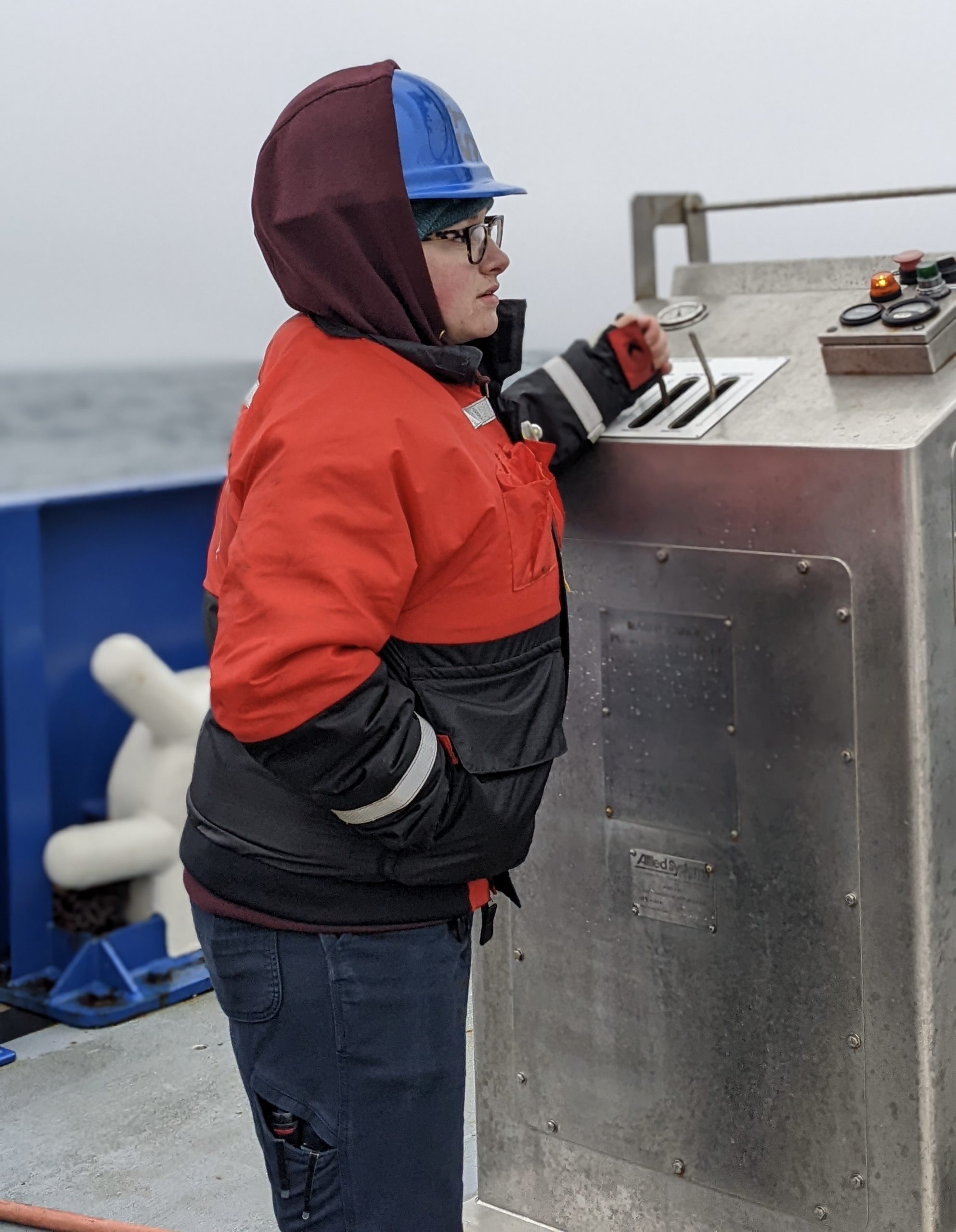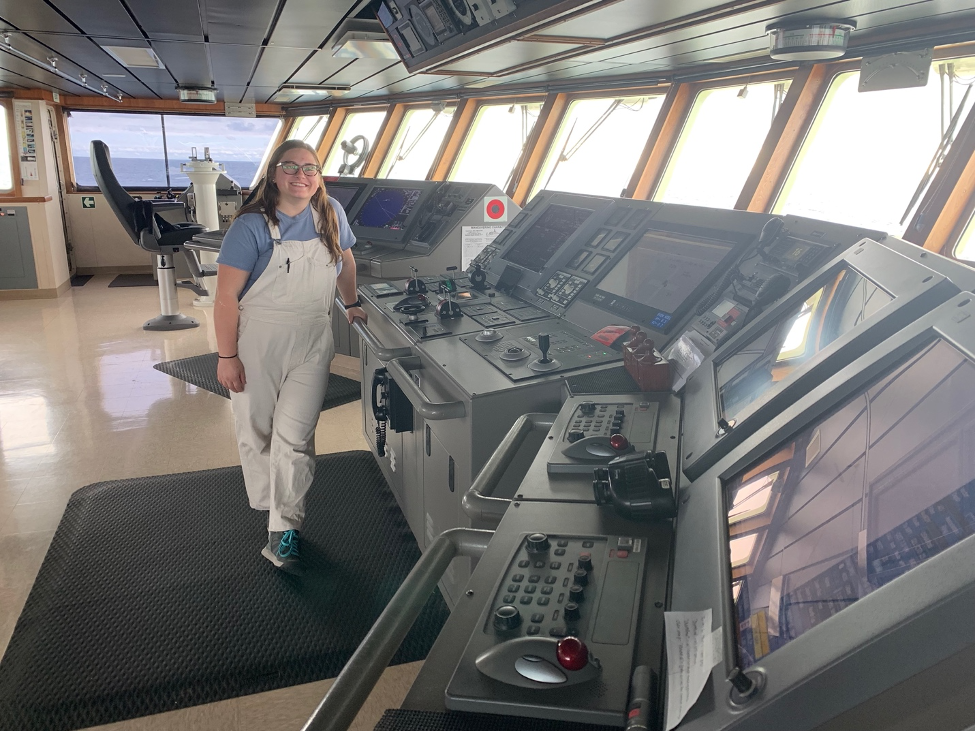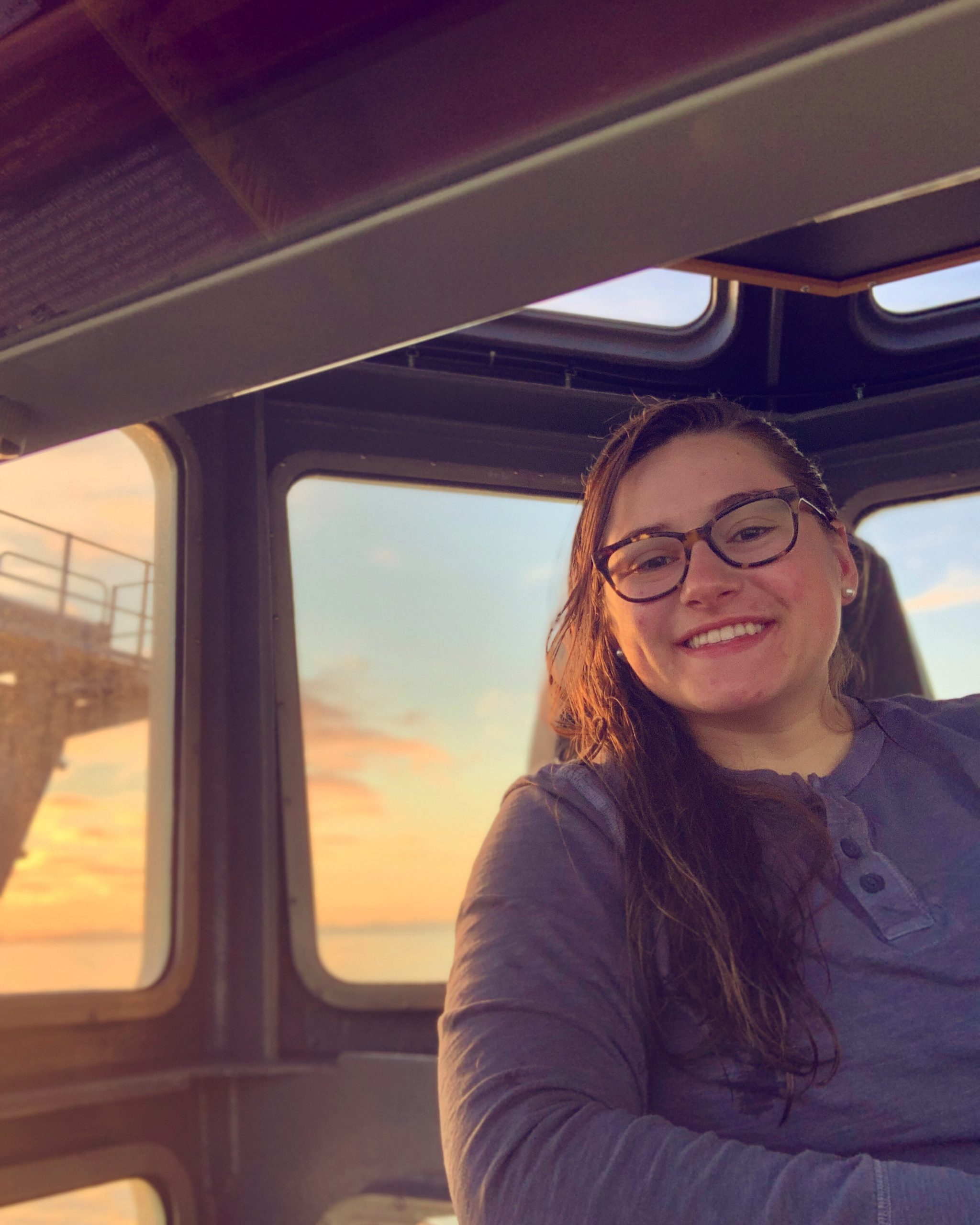Cadet Reports on First Voyage on a Research Vessel
Massachusetts Maritime Academy First-Class Cadet, Ella Strano, recently returned from two months aboard the R/V Neil Armstrong. Ella participated as a working crew member for the recovery and deployment of OOI’s Global Irminger Sea Array in July, followed by deployment of moorings and sampling equipment for the Overturning in Subpolar Arctic Project (OSNAP). She had a few days in shore in Reykjavik, Iceland, as the science parties and equipment were swapped out and onboard.
In a word, Ella described her experience as “Awesome!” and one that was a very different experience than that of her peers’ summer internships shipboard experiences. The majority of cadets at the Massachusetts Maritime Academy shipped out on cargo vessels and bulk carrier tugs for their first experiences of life at sea.
Being one of a few stationed on research vessels presented both opportunities and challenges.
“I definitely had to go with the flow,” she explained. “But l had the opportunity to learn not only from the crew, but from the scientists on board.” Ella’s minor is marine biology so she enjoyed the science aspects of the expedition, even though her responsibilities were primarily with helping to keep the ship operational so the science could be conducted.
Part of MA Maritime’s mission is to provide their students with hands-on at-sea experience so they understand the language and culture of shipboard life. In meeting the spirit of the experience, Ella did almost everything aboard the ship while she was a mate on the Armstrong. During the Irminger expedition, her duties were mostly on deck. She worked with the mooring team and observed how deployment and recovery operations could be conducted safely and successfully. Ella joked that she also did her fair share of cleaning the ship during her first month at sea.
During her second stint for the OSNAP expedition, her duties turned more inward and included work in the engine room, on the bridge, and even helped maneuver the ship to stay on station—a critical task for any science operation at sea. She had her hand in everything on the ship, except for the galley, which was left to the professionals.
Ella also experienced a fair share of weather during her initial trip to the North Atlantic, but was pleased that in spite of some low-pressure and high wind days, the ship never had to abandon its mission to find shelter from the weather.
After two months at sea, Ella said it affirmed what she’s interested in doing after graduating next year. After disembarking from the Armstrong, she said, “I love this. It’s so cool that people get to go out to sea and be involved with science, but not necessarily specialize in one area of science.” She sees life aboard a research vessel as offering her the opportunity to be involved with many different science initiatives, learn what’s going on, and never get bored.
Ella said there seems to be an uptick of interest in working aboard science research vessels as she was one of seven of her classmates who sought such a placement, and only three succeeded. If this holds true that would be good news for research ships, which often have to compete for staff who have the potential to earn more working aboard commercial vessels.
Ella’s experience offered something of greater value to her. “There was a really good camaraderie between the science group and the officers,” she explained. “We were all working together and share experiences during mealtimes and cheese-30 every day”. (A spread of cheese and meats is provided every day at three o’clock aboard the Armstrong as a break and snack). “The crew really tried to make life pleasant aboard the ship, which was great because we were at sea for a long time.”
If all goes as planned, Ella will graduate next year with a Bachelor of Science Degree in Marine Transportation from MA Maritime and with an enlisted unlimited tonnage, third officer certificate from the U.S. Coast Guard. She hopes to find a place aboard the Armstrong or other science-related position, inspired by a full female bridge team, and science party comprised of 50 percent women, and led by a female chief scientist, all of whom showed her what is possible.



